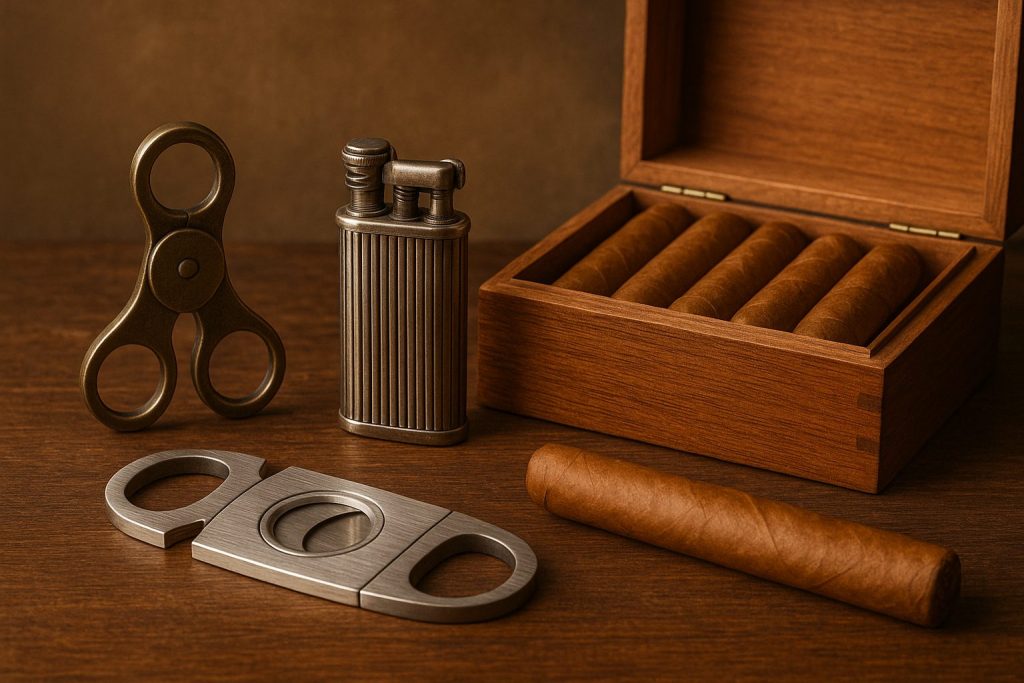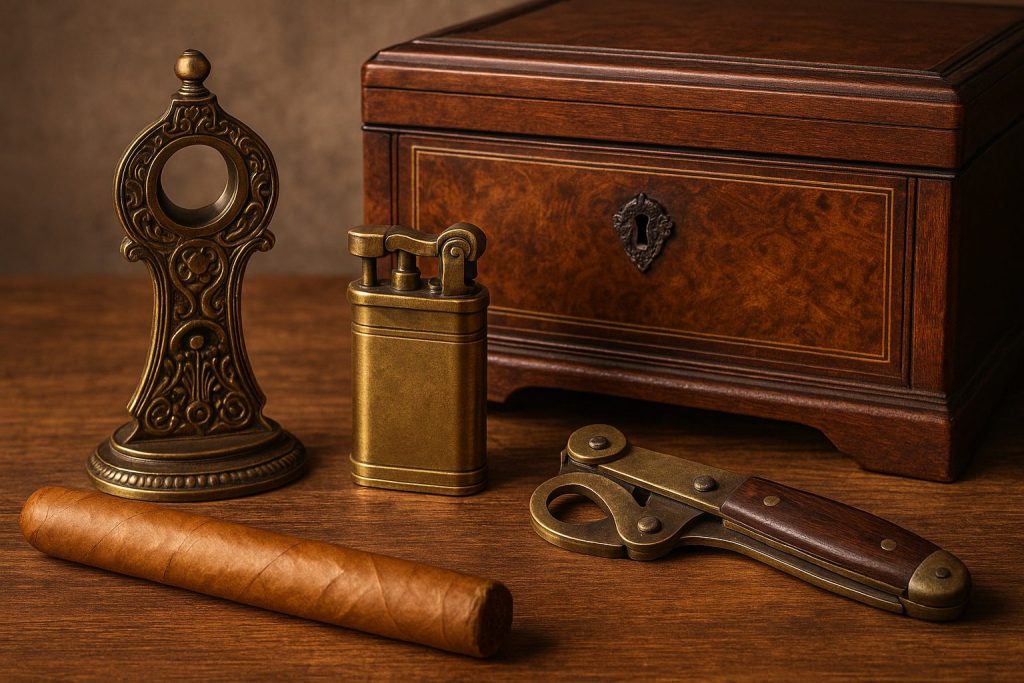Uncategorized
The Evolution of Cigar Accessories: A Journey Through Time
Cigar smoking is an age-old ritual that has transcended generations and cultures. While the cigar itself often takes center stage, the accessories that accompany this indulgence have played a critical role in shaping the experience. From primitive tools to high-tech innovations, the evolution of cigar accessories like cutters, lighters, and humidors offers a fascinating glimpse into craftsmanship, utility, and luxury.
The Early Days: Simplicity and Function
In the earliest days of cigar smoking, accessories were minimal. Cigar enthusiasts used rudimentary tools to cut and light their cigars. Knives, fingernails, and even teeth were often employed to remove the cap from the cigar. While effective, these methods lacked precision and could damage the cigar, affecting the draw and overall experience.
Lighting cigars in those times was equally primitive. Campfires, candles, and oil lamps provided the flame. These inconsistent sources often led to uneven burns, which could ruin the flavor of a well-crafted cigar. The absence of dedicated accessories meant that much of the enjoyment was left to chance.
Humidors were virtually nonexistent for the average smoker. Cigars were stored in wooden boxes or wrapped in leaves. Only the wealthy or dedicated connoisseurs had specialized storage rooms where they could control humidity using water bowls and natural materials. The lack of proper storage often resulted in dried-out cigars or those damaged by mold.
The Rise of Specialized Tools
As cigars grew in popularity during the 19th century, manufacturers and enthusiasts began to recognize the need for specialized accessories. This era marked the introduction of the guillotine cutter, a device that provided a clean and consistent cut. It quickly became a staple for cigar smokers, replacing less reliable methods.
The advent of matches in the mid-1800s revolutionized the way cigars were lit. Sulfur-tipped wooden matches offered a reliable and portable flame. Still, they had limitations. The sulfur residue could affect the taste of the cigar, prompting some smokers to let the match burn for a few seconds before lighting.
Humidors also began to evolve during this period. The introduction of wooden boxes lined with Spanish cedar helped preserve the aroma and integrity of cigars. Humidification methods were still rudimentary, often involving wet sponges or clay jars, but the foundation for modern humidor technology was established.
The Golden Age: Art Meets Function
The early to mid-20th century is often regarded as the golden age of cigars and their accessories. This period saw a boom in the quality and design of cigar tools. Cutters diversified to include punch cutters and V-cutters, each offering a different draw experience. These designs catered to personal preferences, enhancing the ritualistic nature of smoking.
Lighters became both functional and fashionable. The invention of the butane lighter in the 1950s provided a clean, odorless flame that was ideal for cigars. Brands like Dunhill and Dupont introduced luxury lighters with ornate designs and reliable mechanisms. These items were not just tools but status symbols, often gifted on special occasions.
Humidors, too, became more refined. Cabinet-style humidors emerged, capable of holding hundreds of cigars with improved humidity control. Hygrometers were introduced, allowing smokers to monitor humidity levels with greater accuracy. The use of Spanish cedar remained a standard, not only for its aroma but also for its ability to regulate moisture.
The Digital Era: Precision and Innovation
The 21st century has ushered in a new era of cigar accessories marked by technological innovation and precision engineering. Cutters now come with surgical-grade stainless steel blades and ergonomic designs. Electric cutters are also making waves, offering hands-free precision at the push of a button.
Lighters have become more sophisticated. Torch or jet lighters, which produce a focused and wind-resistant flame, are now the go-to choice for many aficionados. Some models feature multiple jets, fuel level indicators, and piezoelectric ignition systems. USB-rechargeable plasma lighters have even entered the scene, offering flameless ignition for the tech-savvy smoker.
Modern humidors are marvels of engineering. Digital hygrometers have largely replaced analog versions, offering precise readings and alerts. Some humidors come equipped with Wi-Fi-enabled systems that allow users to monitor and control humidity levels from their smartphones. Portable humidors have also become more advanced, utilizing Boveda packs or integrated humidifiers to maintain ideal conditions on the go.
Luxury and Customization
Today’s market reflects a strong trend toward personalization and luxury. Custom-made humidors, monogrammed cutters, and limited-edition lighters cater to the discerning smoker. Brands collaborate with artists and designers to create one-of-a-kind pieces that blend functionality with aesthetic appeal.
Materials have also evolved. Carbon fiber, titanium, and even gold are used to craft high-end accessories. These materials not only offer durability but also contribute to the allure of exclusivity. Cigar lounges and online retailers now offer curated kits and subscription boxes that introduce smokers to new and innovative tools.

Sustainability and the Future
As with many industries, sustainability is becoming a focal point in the cigar accessory world. Companies are exploring eco-friendly materials and refillable designs to reduce waste. Digital innovations also minimize the need for disposable components, contributing to a more sustainable lifestyle for cigar enthusiasts.
The future holds promise for even more advancements. Artificial intelligence and smart sensors could further refine humidity control. Augmented reality might be used in cigar lounges to offer tutorials or blend information. The integration of technology and tradition continues to shape the accessories that define the cigar-smoking experience.
Conclusion
The evolution of cigar accessories mirrors the journey of the cigar itself. From simple, makeshift tools to technologically advanced devices, these accessories have enhanced the ritual, precision, and enjoyment of smoking. Whether you are a seasoned aficionado or a curious newcomer, understanding this evolution offers a deeper appreciation for the craftsmanship and culture surrounding cigars.
Cigar accessories are more than just tools. They are symbols of history, innovation, and personal expression. As the industry continues to evolve, one thing remains constant: the pleasure of a well-cut, perfectly lit, and expertly stored cigar is timeless.

